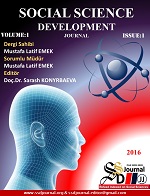AN IMPORTANT SOURCE PECULIAR TO TURKISH WORLD “Şeşendik”
DOI:
https://doi.org/10.31567/ssd.4Keywords:
Ogyzname, Gibatul Hama, DiwaniAbstract
Today, the history of the national oratory of the Kazakh people is the history of the Turkic Khaganate, the Karakhanids,
originates from the era of the Kipchak states, VI-IX centuries. common to Turkic-speaking peoples
such as Kultegin, Bilge Khagan, and Tonykok among the Orkhon-Yenisei written monuments
It is known to have been distributed since the engraved inscriptions. In this regard, J. Balasaguni
"Kutadgu bilik", "Diwani Lugat-at Turk" by M. Kashkari, "Diwani" by Khoja Ahmet Iassaui
wisdom", A. Iguneki's many works such as "Gibatul Hama" in the world of civilization
place is special. Also, "Codex Kumanix" (XIII-XV centuries), author of which is unknown.
The poems "Ogyzname" were written in the later period by the Kazakh historians Haidar Dulati
("Tarihi Rashidi"), Kadirgali Jalayri ("Jamig-at-Tawarih"), Babur from Zahari
It is true that the works ("Babyrname") were written as historical, literary and artistic chronicles. To this
Chechen-dancers in the Kazakh literature spanning five consecutive centuries (XV-XIX centuries).
(Maiky, Ketbuga, Asan Gob, Jirenshe, Tole, Kazybek, Aiteke, Syrim)
It is a necessary principle for a young speaker to look at his heritage and use it as needed. Oratory
Kazakh opinion that birth and formation are connected with the emergence of society
The history of the development of oratory also proves it [1,60]. Some notes on historical legends
according to the data, Kazakh oratorical art formed the first khanates, Mayky dance,
Closely connected with Ayaz dances (XII-XIII centuries), Asan Gobry, Jirenshe Chechens (XIV-XVI centuries)
it depends.




